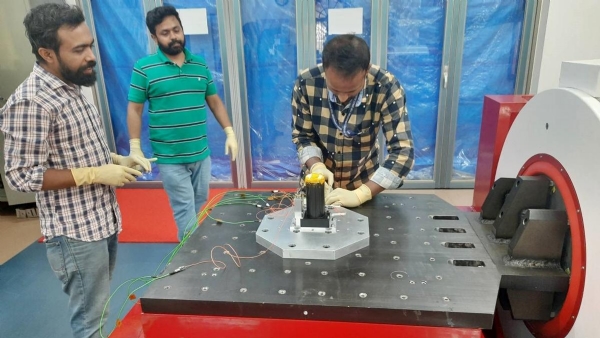India's low-cost star sensor successfully tested on ISRO's PSLV orbital experimental module
On its maiden space test, the sensor was launched onboard the PSLV Orbital Experimental Module (POEM) and began functioning after the deployment of the two primary and secondary satellites of the mission.
Total Views |
Bengaluru, May 02 :A new sensor developed to identify stars in the sky is performing well in the vacuum of space as it continues to function on the fourth stage of the PSLV-C55 mission launched last month. The StarBerry Sense has been developed by the Indian Institute of Astrophysics from off-the-shelf components.
On its maiden space test, the sensor was launched onboard the PSLV Orbital Experimental Module (POEM) and began functioning after the deployment of the two primary and secondary satellites of the mission.

The main function of the sensor is to image the field of view, correctly identify the stars it sees, and calculate the pointing direction.
"The StarBerrySense is performing well, and the initial data has now validated its design as well as its function," the Department of Space, said in a statement.
The low-cost sensor has been designed to quickly calculate where the satellite is pointing and provides the most accurate information about a spacecraft’s orientation. "Not only has StarBerrySense withstood the harsh conditions in space and is functioning as expected, but the initial data also shows that it is able to calculate the pointing direction," the Space Payloads Group at IIA has announced.
A new low-cost star sensor developed by astronomers from off-the-shelf components was recently launched by ISRO on board PSLV C-55
— PIB India (@PIB_India) May 1, 2023
The StarBerrySense payload developed by the Indian Institute of Astrophysics (IIA) was launched on 22 April
Read here: https://t.co/u9IodSknLc pic.twitter.com/6BN8jyspDq
“StarBerrySense was mounted on ISRO's PSLV Orbital Experimental Module (POEM), which provides a stable platform for our payload to operate from. POEM is a unique initiative by ISRO that utilises the spent 4th stage of the PSLV as an orbital platform for carrying out scientific experiments. It is an excellent opportunity to conduct short-term scientific experiments in space,” Rekhesh Mohan, the Principal Investigator of the StarBerrySense project, said in a statement.
The primary objective of the mission was to demonstrate the sensor can withstand the harshness of space and before launching it on PSLV-C55, the team had conducted flight qualification tests at the MGK Menon Laboratory for Space Sciences, and sky imaging tests were conducted at our Vainu Bappu Observatory.
"Analysis of the preliminary data has confirmed that the imaging equipment works as expected, and the onboard software is able to calculate the pointing direction. Using the images received from the payload, we are verifying its accuracy by comparing with data from international databases,” Mahesh Babu, electronics engineer with the team said.
.
.

